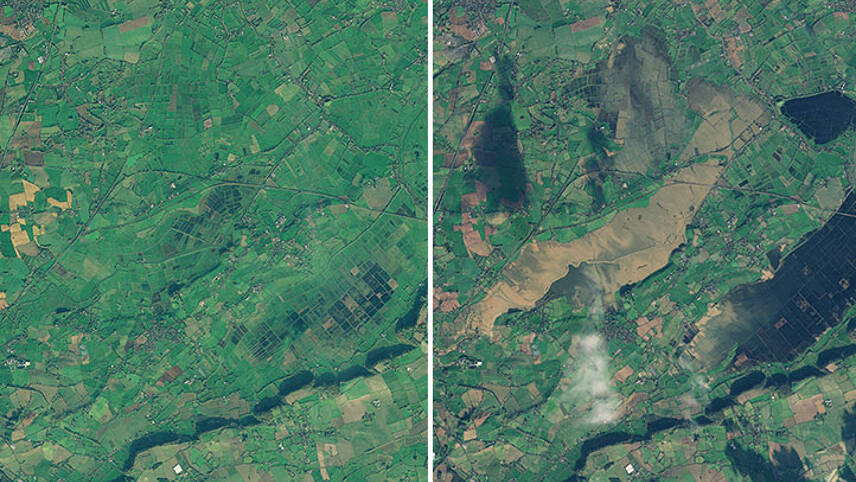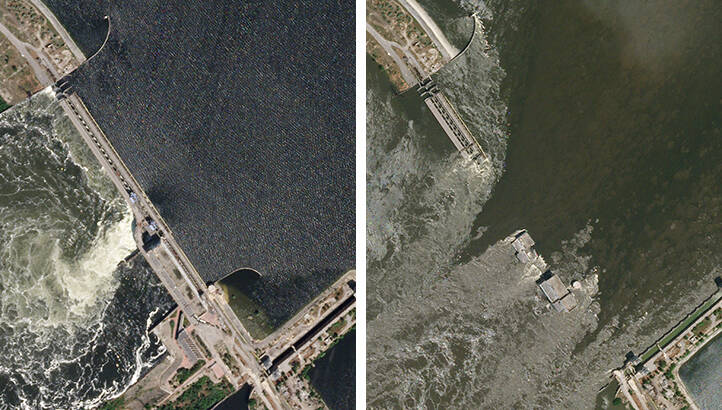Register for free and continue reading
Join our growing army of changemakers and get unlimited access to our premium content

PlanetScope • Researchers are investigating how satellite data can be used to detect organic matter from sewage overspills and their downstream impact. Pictured: Sewage overflow discharge • Northmoor Green, Somerset, England. December 7, 2022 - January 13, 2023
Madeline Dahm is a curious Planeteer working to make the Earth’s changes visible, accessible, and actionable.
In 2022, untreated sewage was pumped into the United Kingdom’s creeks, rivers, and beaches for a grand total of 1.75 million hours, BBC reported.
During heavy rains, the U.K.’s Victorian-era sewers fill up quickly with stormwater, and the only way to keep it from backing up into homes is to discharge it into waterways.
While this has been an issue for a long time, the U.K. government showed their dedication to finding a solution in the 2023 Environmental Improvement Plan.
This ambitious environmental infrastructure plan aims to tackle stormwater discharge – not only by requiring water companies to invest £56bn over 25 years to prevent sewage discharge – but also to greatly expand their storm overflows monitoring program.
The government and private sector are now on the hook for some significant changes to operations. This is a big problem – so big, Planet satellites can see it from space.
Making change visible, accessible, and actionable
Founded in 2010 by three NASA scientists, Planet designs, builds, and operates the largest fleet of Earth observation satellites – all with the goal of using space to help life on Earth. We monitor the whole Earth’s landmass every day, and we’ve captured a lot of important (and interesting) moments over the last decade.
Pictured above: Retreat of the Columbia Glacier, Alaska, USA • September 2010 — July 2022
The way we see it, more transparency leads to more accountability, which leads to action.
Beyond looking at the U.K.’s sewage from space, we’ve helped researchers, journalists, and governments around the world find answers and solutions to some serious environmental, humanitarian, and national security situations while reminding Earthlings of the inspiring beauty of our planet.
Pictured above: Destruction of the Kakhovka Dam • Nova Kakhovka, Ukraine • June 1 – June 7, 2023
Water – our world’s most precious resource – is top of mind
The Sustainability Exploration Environmental Data Science (SEEDS) programme is investigating how Earth observation data – including satellite imagery from Planet – can be used to provide predictive analysis into artificial intelligence (AI) models to predict when sewage overspill events would occur.
“The initial findings show that Planet data has the potential to identify organic matter in waterways and could be used to detect organic matter from sewage overspills and their downstream impact. This type of data could be a valuable input into an early warning system for water bodies across the UK,” said Ordnance Survey in an article in early 2023.
This type of predictive analysis is vital to develop adequate monitoring and mitigation strategies, both for companies to make preparations for overflow events – and for governments to hold companies accountable for their clean-up.
While we’re still in the early stages of helping with the UK’s sewage problem, Planet’s data is already scientifically validated and being used at scale in the management of floods, droughts, and other water quality issues, and will likely be a big part of the UK’s New Geospatial Strategy.
Learn more about Planet solutions for water management
Check out Planet’s e-book, A New World of Water, to learn more about how satellite data is helping to predict harmful algae blooms in the Oder River in Poland, monitor compliance with water regulations in Australia, or balance environmental, recreational, and economic growth for protected aquatic species in the United States.





Please login or Register to leave a comment.